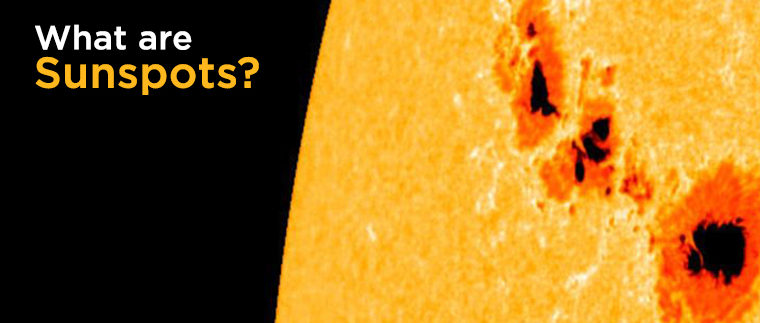In News – Recently, NASA’s Solar Dynamics Observatory (SDO) observed a massive Sunspot group named AR2770.
- It emitted a few minor space flares which caused minor waves of ionization to ripple through Earth’s upper atmosphere.

What are Sunspots?
- A sunspot is a dark area on the sun’s surface which is relatively cooler than the surrounding parts.
- These sunspots have electrically charged gases that generate areas of powerful magnetic forces and some sunspots are as large as 50,000 km in diameter.
- Sunspots are a common sight on our Sun during the years around solar maximum.
- Solar maximum or solar max is the period of greatest solar activity in the solar cycle of the Sun, where one solar cycle lasts about 11 years.
- The current solar cycle, which began in 2008, is in its ‘solar minimum’ phase, where the number of Sunspots and solar flares is at a routine low.
- Types of Sunspots -They typically consist of a dark region called the ‘umbra’, which is surrounded by a lighter region called the ‘penumbra’.
- In every solar cycle, the number of Sunspots increases and decreases.

What are Solar flares and Coronal Mass Ejections?
- Solar flares are the result of changes in magnetic fields on the sunspots that cause a huge explosion. These solar flares are often released into space.
- At times, solar flares are accompanied by Coronal Mass Ejections (CME)in which large bubbles of radiation and particles emitted by the Sun that explodes into space at high speed.
- CMEs can trigger intense light in the sky on Earth, called auroras.

- The solar flare explosion’s energy can be equivalent to a trillion ‘Little boy’ atomic bombs dropped on Hiroshima and Nagasaki in 1945.
- Recently, scientists developed a new model that can successfully predict seven of the Sun’s biggest flares from the last solar cycle out of a set of nine with the help of NASA’s Solar Dynamics Observatory.
Damage caused by Solar flares- Solar flares can have a major effect on radio communications, Global Positioning Systems (GPS) connectivity, power grids, and satellites.

